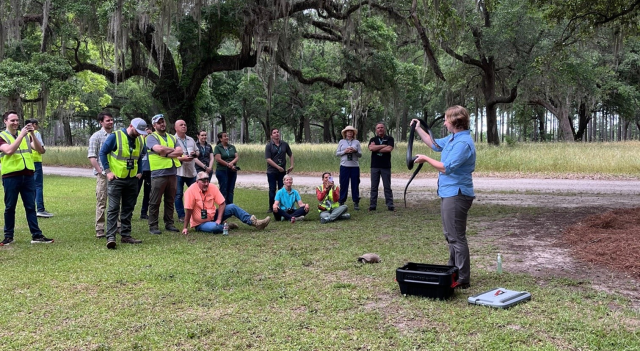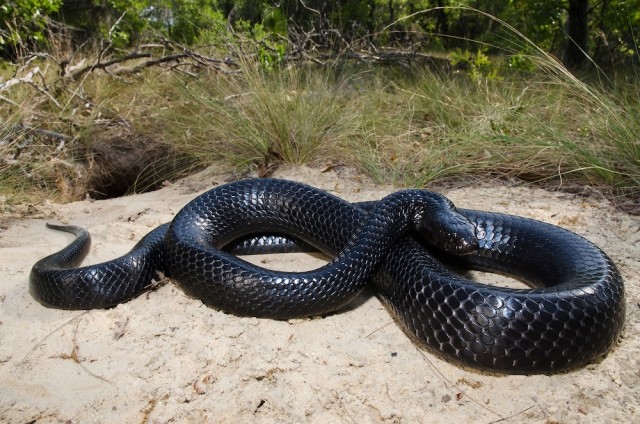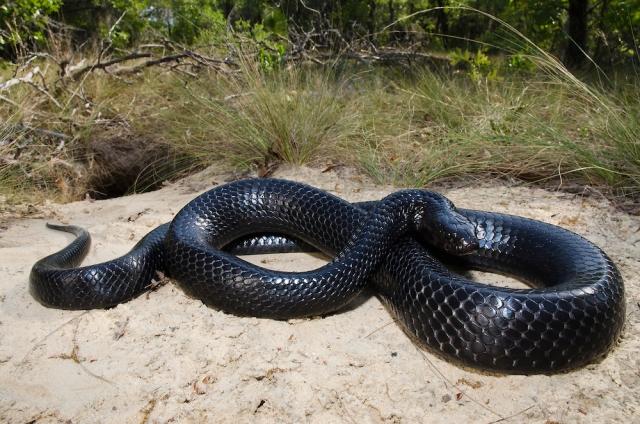The eastern indigo snake is part of the Drymarchon genus of snakes, which comes from the Greek words “drymos” (forest) and “archon” (ruler or lord). This species lives up to its name as it is the longest native snake species in the United States. The eastern indigo snake once flourished in the longleaf pine forests. Its striking glossy blue-black coloring could be seen slithering across the forest floor, but now due to habitat loss, this federally threatened species has been pushed to the brink disappearing from the forests it once thrived.
However, thanks to a grant from NFWF with funding support from IP and four additional funding partners, efforts to bring this species back are gaining new momentum.
A representative from the Georgia Department of Natural Resources shows IP customers an eastern indigo snake during a company-sponsored forestry tour in Georgia.

The grant, awarded to The Nature Conservancy Florida Chapter through the Longleaf Landscape Stewardship Fund, is part of a broader, multi-year initiative to restore critical longleaf pine habitat in Southwest Georgia and Florida. These open-canopied forests not only support the indigo snake but are home to many at-risk species like the gopher tortoise, red-cockaded woodpecker, and Bachman’s sparrow.
This funding will also support the care and breeding of eastern indigo snakes at the Orianne Center for Indigo Conservation (OCIC), the world’s first and only facility dedicated to this species. Captive-bred snakes raised at OCIC have been released at The Nature Conservancy’s Apalachicola Bluffs and Ravines Preserve since 2017. And for the first time in 2023, wild-born juveniles were documented on the landscape, signaling a huge milestone in recovery efforts.
Seeing wild-born indigo snakes for the first time in decades is an incredible milestone. It’s proof that when we invest in both species and habitat, we can reverse declines and rebuild populations from the ground up.
In tandem, the grant will fund habitat restoration by supporting prescribed burning, hardwood reduction, and the planting of more than 4,900 acres of longleaf pine. These actions help restore the open, sun-dappled understory that snakes and their prey need to thrive.
This support from IP marks its first direct investment in eastern indigo snake recovery. Through NFWF’s Longleaf Landscape Stewardship Fund grant program, IP is also helping restore habitat for other at-risk snake species such as the Louisiana pine snake and northern pine snake.
As invasive species and development continue to threaten the Southeast’s forests, partnerships like this are critical. That is why World Snake Day is a great reminder that even the most misunderstood animals deserve a place and a future on our planet.
Pictured: eastern indigo snake. Photo used with permission from The Longleaf Alliance




